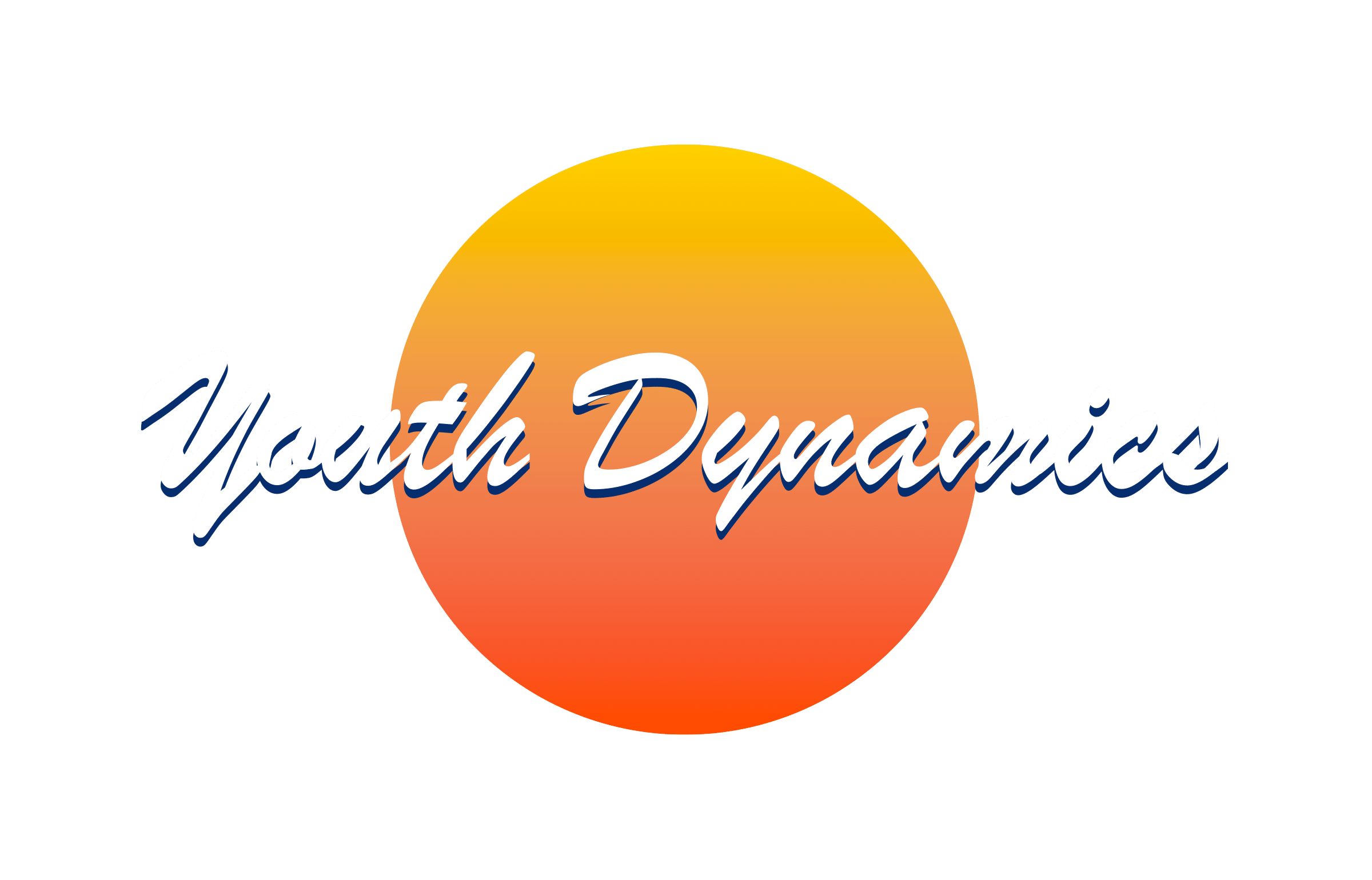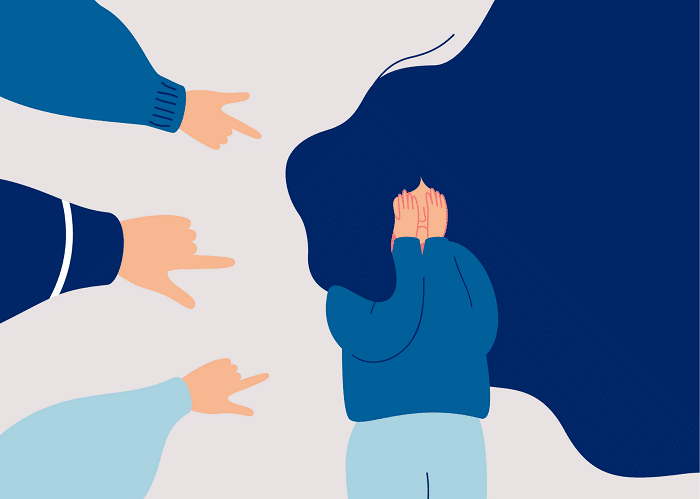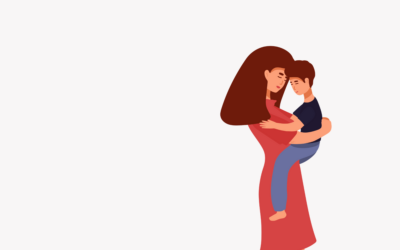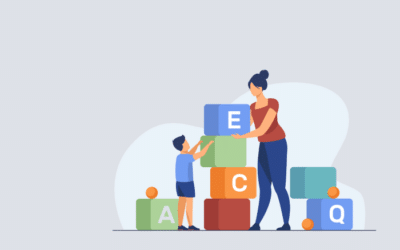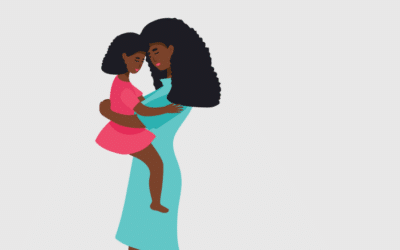What if I told you that roughly 1 in 10 kids struggles with ADHD? Would you be shocked? Would you even believe me? The truth is, there’s no shortage of stigma or false beliefs surrounding the disorder. And that has real consequences for kids and caregivers. People who struggle often face significant barriers in their quest just to keep up, let alone get ahead in life.
“Hey, space cadet! Get with it, Katie!”
“Did you hear me? You aren’t listening! Why are you so disrespectful?”
“What’s wrong with you? Why are you so weird?”
“Something isn’t right. Give up, Richard. She’s not capable.”
Growing up, I was always told I was different. Truthfully, as a child, I’ve been labeled dumb, even socially inept. Really, nothing ever came easy for me, not school, not making friends— it was always an uphill battle. In fact, at five years old, my report card stated, “Katie spends most of her time alone daydreaming. She’s a contemplative, sweet girl. However, she isn’t making friends with the other kids.”
Now, fast forward to second grade, and I still couldn’t read. It’s funny, I’ll never forget Hooked on Phonics. I remember my parents thinking it would be the “cure-all” for me. Really, that it would be the “magic solution.” Every moment my father wasn’t working, he spent trying to teach me to read using that dang curriculum. Honestly, it was exhausting! And after nearly a year of dedication to trying to get me caught up, it just wasn’t working.
So, with a deep sense of defeat, my parents elicited the help of an expert. I remember spending an entire day at the hospital with a doctor doing tests. Then, after all the buildup of countless questions and tasks, a verdict was handed down, Attention Deficit Disorder- Inattentive Type (ADD) and Dyslexia. It came as a shock, at least, that’s what I’m told. I wasn’t hyperactive. In fact, I was quite the opposite. I was often described as a quiet, complacent child.
And, learning disability? No way! My parents couldn’t accept such a diagnosis. We come from a family of “smarts.” Certainly, no one in the bloodline could have such an affliction.
50% of kids with ADHD will struggle with at least one learning disorder.
What are the Symptoms of ADHD?
Today, ADHD is well known for a mosaic of symptoms, characterized by inattention, hyperactivity, and impulsivity. However, both the distribution and presentation of those symptoms can be vastly different depending on a child’s gender and predisposition. This can lead many young kids who have less outwardly facing symptoms to not get the help they need.
Below are the three different sub classifications of the disorder. And, while ADHD combined type, featuring symptoms across the spectrum, is most frequently diagnosed, children, like me, often don’t fit that mold.
ADHD Predominantly Inattentive Presentation (ADD)
- Trouble paying attention (easily sidetracked)
- Doesn’t like or avoids long mental tasks (such as homework)
- Trouble staying on task during school, at home, or even at play
- Disorganized and seems forgetful
- Doesn’t appear to listen when directly spoken to
- Doesn’t pay close attention to details
- Loses things often
- Makes careless mistakes
- Struggles to follow through with instructions
ADHD Predominantly Hyperactive-Impulsive Presentation
- Blurting out answers before a question is finished
- Constantly interrupting others
- Trouble waiting for their turn
- Talks too much
- Fidgeting, tapping, and squirming
- Gets up when it’s not appropriate (such as when the teacher is talking or in the middle of dinner)
- Running or climbing in inappropriate situations.
- Unable to play quietly
- Always “on the go.”
ADHD Combined Type- Attention Deficient Hyperactivity Disorder (Most Commonly Diagnosed)
Combination of the inattentive and hyperactive-impulsive symptoms above.
They Think Different! Kids with ADHD Aren’t Stupid or Lazy.
Once I learned how to read, you couldn’t hold me back. I loved to learn! Math, science, language, history— I absorbed everything like a sponge. But learning was always on my own terms. I hated school! And, I was so busy doing my own thing that I often forgot to do my homework. Or, I was so disorganized that I literally lost it. It was like the chaos of my mind vomited all over my world. My whole life was a mess!
More so, I was always getting in trouble. Every time I didn’t turn something in, it was a big ordeal. But the puzzle pieces linking my actions to their consequences didn’t connect. School created deep feelings of anxiety for me. And making things worse, I was awkward and didn’t have any friends. So, I just didn’t want to go. Truthfully, it was a terrible period in my life. I developed a concrete fear surrounding any type of structured learning.
Kids with ADHD are Shaped by Their World
The statistics surrounding kids’ mental health and ADHD are telling. 39% of children with the disorder struggle socially. And anxiety? It affects a whopping 47% of those plagued with the condition. Really, the symptoms of ADHD create a tug and pull between kids and their environment. It affects the way they behave, and consequently, the way others interact with them. Ultimately, it shapes how they see themselves and the world around them.
47% of people with ADHD struggle with anxiety.
More so, over time, children’s brains hardwire themselves around maladaptive experiences linked to the disorder. Their interactions with others and their environment mold the way they think. And, this can have lasting effects as they age, even if they no longer struggle with the disorder. So, issues surrounding anxiety, fear, and unpleasant social interactions can last a lifetime without intervention, making it critical to put supports in place for children early on.
Treatment Makes a Big Difference!
By the time I reached high school, private afternoon tutoring sessions were the norm. But, it was of no avail. I didn’t have any focus. I was bored. I didn’t feel challenged by school. Nothing that I was learning ever really caught my interest. At fifteen-years-old, it didn’t look like I was going to graduate high school. I was failing just about everything but science.
Shortly after my sixteenth birthday, I was shipped off to boarding school. It was a turning point for me. That’s the first time there was a push to get me ADHD treatment. And the rest was history. I finished four years of high school in 18 months. By the time I was seventeen years old, I was taking college-level courses. I even began tutoring other kids in science.
What Does Treatment Look Like?
Stigma and misinformation often keep children from getting the help they need to thrive. That said, there’s a myriad of interventions for ADHD, but those that are most effective include behavioral and educational supports combined with medication therapy. Truthfully, stimulants alone improve symptoms in 70% to 80% of kids who take them almost instantaneously, but caregivers often pass them over.
At the end of the day, each child is unique and will need individualized care. We can’t stress enough, though, how important it is to get your child evaluated if they are struggling and advocate for them to get whatever supports are recommended. Without intervention, kids with ADHD can miss out on a lot of developmental milestones. And, every year you wait to seek support, the impact of that is magnified.
There’s No Cure! But, Some Kids Will Grow Out of It.
As with most conditions of the mind, there’s no magic elixir that “cures” ADHD. But thankfully, many kids will grow out of it as their brain develops. However, roughly 65% of children who have ADHD will continue to struggle as adults. And truthfully, I have no shame in saying that I am one of them.
Roughly 65% of children who have ADHD will continue to struggle as adults.
In fact, except for a few brief periods in my adult life, I’ve stayed the course with treatment. Because when I haven’t, I struggle to function. I struggle to interact, go to school, work, and even drive! Heck, I can’t keep track of my car keys, let alone get out of the grocery store for a few items in less than a solid hour. Living with ADHD has required more than just a magic pill, though. It requires a conscious effort towards standup organizational skills, time management, and purposeful interactions with others.
While I always felt supported by parents, a lot of people wrote me off in my childhood. But, in spite of it all, I’ve accomplished quite a bit in my later years. A little over ten years ago, I finished college with two Bachelor’s degrees, graduating with honors. And today, I’m almost finished with an MBA and did it while holding down a full-time career. I tell you that not to boast, but to show that within every child is significant potential. And, while labels serve to help streamline kids to appropriate supports, no one fits neatly into a prescribed box.
Want to Make a Difference?
Moving forward, I challenge you to look at your child, student, friend, or colleague a little differently. When you see someone, put on your rose-colored sunglasses, look past their weaknesses, and instead see them for their strengths. Then, build on those strengths with your words and your actions. More so, be patient with others and love them without condition. No one is perfect. We’re all in different places on our journey.
That said, every child is one caring adult away from being a success story. And, you can be that adult! We are always looking for mentors to help Montana kids. If you would like to get involved, contact us today online, call us at 406-245-6539, or message us over Facebook.
Need Support?
No child should have to suffer in silence. We provide a wide variety of mental health services to youth and families through 31 locations across the state for those who are struggling. Contact us online or give us a call at 406-245-6539 today!
Want More?
If you enjoyed this article, check out the rest of our blog today and make sure to follow us at Youth Dynamics of Montana and People of Youth Dynamics on Facebook.
